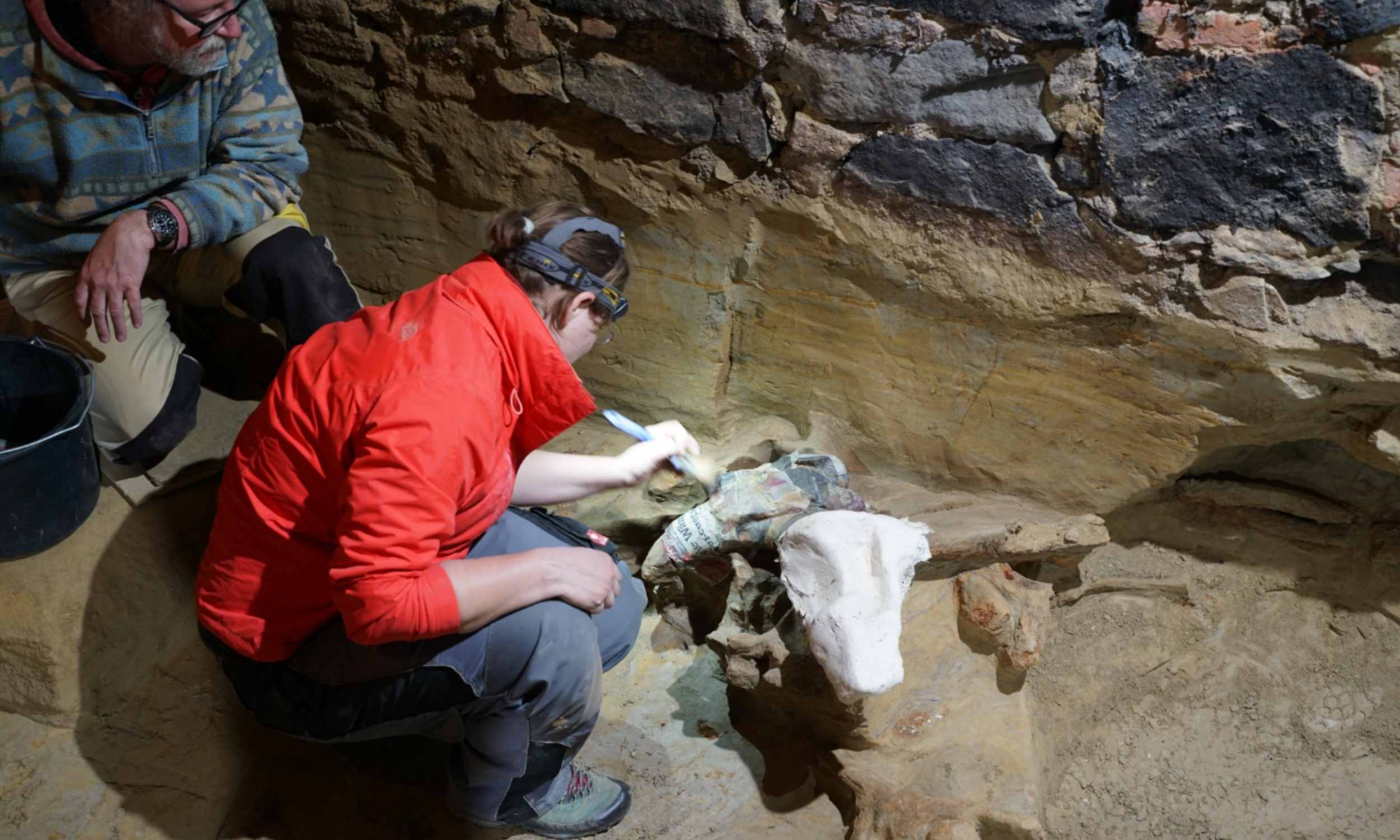VICTORIA COUNTY, Texas (Gray News) — Former Disney actor Matt Prokop is facing several charges in Texas, including possession or promotion of child pornography, according to multiple outlets.
The Victoria County Sheriff’s Office confirmed…

VICTORIA COUNTY, Texas (Gray News) — Former Disney actor Matt Prokop is facing several charges in Texas, including possession or promotion of child pornography, according to multiple outlets.
The Victoria County Sheriff’s Office confirmed…

NanoKnife success rate for pancreatic cancer is an increasingly important topic as irreversible electroporation (IRE) gains attention as a local treatment option for selected patients with this challenging disease. NanoKnife,…

When patients search for the CAR T-cell therapy success rate in acute lymphoblastic leukemia (ALL), they are usually asking a deeper question: What are my chances of remission, how long can it last, and can this treatment truly…

As humans, we like to think we’re one of a kind. But pull the camera back and the picture gets simpler: humans, like every other species, run on instincts shaped by evolution.
One of those instincts kicks in when something outside the group…

A winemaker renovating a cellar in Lower Austria uncovered bones from several Ice Age woolly mammoth dating between 30,000 and 40,000 years ago, making the find one of Austria’s most important in over a century.
The remains emerged beneath a…

A section of the M6 has reopened earlier than expected after a new bridge was installed.
The Clifton railway bridge near Penrith has been replaced by Network Rail and Skanska as part of a £60m investment into the West Coast Main Line.
A road closure was put in place between junctions 39 and 40 for the duration of the weekend and the road, which was due to open at 05:00 GMT on Monday, re-opened at 16:00.
Christian Irwin, Network Rail North West and Central director, said it took “hard work” from hundreds of people to install the new structure so quickly.

Smart glasses have been the tech dream we’ve been chasing for years now, and the technology is finally getting there. Better displays, improved hardware, and an ever-growing list of platforms for smart glasses were on full…

| At a Glance | |||||||
|---|---|---|---|---|---|---|---|
| Day | 1 | 2 | 3 | 4 | 5 | 6 | 7 |
| Meals | Breakfast: Avocado Toast & Jammy Eggs ——– Lunch: Cucumber-Hummus Wrap & Veg Cottage Cheese ——– Dinner: Roasted Salmon & Broccoli Rice Bowl |
Breakfast: Egg, Cheese & Spinach Breakfast… | |||||

PLEASANTON, Calif., Jan. 11, 2026 /PRNewswire/ — 10x Genomics, Inc. (Nasdaq: TXG), a leader in single cell and spatial biology, today announced preliminary, unaudited select results for the fourth quarter and full year ended December 31, 2025.
Preliminary, Unaudited Select Fourth Quarter 2025 Financial Results
Preliminary, Unaudited Select Full Year 2025 Financial Results
“I am incredibly proud of the tenacity and ingenuity our team displayed throughout 2025,” said Serge Saxonov, Co-founder and CEO of 10x Genomics. “While the macro environment was challenging, the team forged even stronger partnerships with customers, made important progress across our product roadmap and maintained tight operational discipline, leading to a significant strengthening of our balance sheet. I am confident that our greatest impact lies ahead and 10x is well positioned for the future.”
J.P. Morgan Healthcare Conference
10x Genomics, Inc. is providing these updates in advance of its participation in the 44th Annual J.P. Morgan Healthcare Conference, which begins tomorrow. A live webcast of the company’s presentation and question and answer session, which begins at 8:15 a.m. Pacific Time on Monday, January 12, 2026, will be available on the “Investors” section of the company’s website at: https://investors.10xgenomics.com/. The webcast will be archived and available for replay for at least 30 days after the event.
Preliminary Select Results Subject to Adjustment
10x Genomics, Inc. has not completed preparation of its consolidated financial statements for the fourth quarter or fiscal year of 2025. The select results presented in this news release for the fourth quarter and year ended December 31, 2025 are preliminary and unaudited and are thus inherently uncertain and subject to change as we complete preparation of our consolidated financial statements for the year ended December 31, 2025. 10x Genomics, Inc. is in the process of completing its customary year-end close and review procedures as of and for the fourth quarter and year ended December 31, 2025, and there can be no assurance that final results for these periods will not differ from these estimates. During the course of the preparation of 10x Genomics, Inc.’s consolidated financial statements and related notes as of and for the year ended December 31, 2025, we or our independent registered public accountants may identify items that could cause final reported results to be materially different from the preliminary unaudited financial estimates presented herein.
About 10x Genomics
10x Genomics is a life science technology company building products to accelerate the mastery of biology and advance human health. Our integrated research solutions include instruments, consumables and software for single cell and spatial biology, which help academic and translational researchers and biopharmaceutical companies understand biological systems at a resolution and scale that matches the complexity of biology. Our products are behind breakthroughs in oncology, immunology, neuroscience and more, fueling powerful discoveries that are transforming the world’s understanding of health and disease. To learn more, visit 10xgenomics.com or connect with us on LinkedIn, X, Facebook, Bluesky or YouTube.
Forward-Looking Statements
This press release contains forward-looking statements within the meaning of the Private Securities Litigation Reform Act of 1995 as contained in Section 27A of the Securities Act of 1933, as amended, and Section 21E of the Securities Exchange Act of 1934, as amended, which are subject to the “safe harbor” created by those sections. All statements included in this press release, other than statements of historical facts, may be forward-looking statements. Forward-looking statements generally can be identified by the use of forward-looking terminology such as “may,” “might,” “will,” “should,” “expect,” “plan,” “anticipate,” “could,” “intend,” “target,” “project,” “contemplate,” “believe,” “see,” “estimate,” “predict,” “potential,” “would,” “likely,” “seek” or “continue” or the negatives of these terms or variations of them or similar terminology, but the absence of these words does not mean that a statement is not forward-looking. These forward-looking statements include statements regarding 10x Genomics, Inc.’s expected financial results for the fourth quarter and year ended December 31, 2025 and our future opportunities and performance. These statements are based on management’s current expectations, forecasts, beliefs, assumptions and information available to management as of the date hereof. Actual outcomes and results could differ materially from these statements due to a number of factors and such statements should not be relied upon as representing 10x Genomics, Inc.’s views as of any date subsequent to the date of this press release. 10x Genomics, Inc. disclaims any obligation to update any forward-looking statements provided to reflect any change in our expectations or any change in events, conditions or circumstances on which any such statement is based, except as required by law. Although 10x Genomics believes that the expectations reflected in the forward-looking statements are reasonable, it cannot provide any assurance that these expectations will prove to be correct nor can it guarantee that the future results reflected in the forward-looking statements will be achieved or will occur. The material risks and uncertainties that could affect 10x Genomics, Inc.’s financial and operating results and cause actual results to differ materially from those indicated by the forward-looking statements made in this press release include those discussed under the captions “Risk Factors” and “Management’s Discussion and Analysis of Financial Condition and Results of Operations” in the company’s most recently-filed 10-K, 10-Q and elsewhere in the documents 10x Genomics, Inc. files with the Securities and Exchange Commission from time to time. 10x Genomics’ products are for research use only (RUO) and are not for use in diagnostic procedures. “10x Genomics”, “Chromium” and “Xenium” are trademarks of 10x. 10x trademarks are the sole property of 10x, and are subject to legal protection in the United States and/or certain other countries.
Disclosure Information
10x Genomics uses filings with the Securities and Exchange Commission, its website (www.10xgenomics.com), press releases, public conference calls, public webcasts and its social media accounts as means of disclosing material non-public information and for complying with its disclosure obligations under Regulation FD.
Contacts
Investors: [email protected]
Media: [email protected]
SOURCE 10x Genomics, Inc.

SOUTH SAN FRANCISCO, Calif., Jan. 11, 2026 /PRNewswire/ — IDEAYA Biosciences, Inc. (NASDAQ: IDYA), a leading precision medicine oncology company, provided a business update including an overview of key corporate objectives for 2026. The company will review these updates during its presentation at the 44th Annual J.P. Morgan Healthcare Conference on Monday, January 12, 2026 at 3:45pm PST.
“2025 was a year of execution, marked by broad pipeline advancement, commercial readiness activities for darovasertib, and the filing of four INDs resulting in nine clinical programs. Our deep pipeline and cash runway into 2030 enable IDEAYA to advance key combinations and to address multiple indications with high unmet need, including uveal melanoma, small cell lung cancer, neuroendocrine cancer, breast cancer, and MTAP-deleted lung, pancreatic, and urothelial cancers. In 2026, we plan to advance four registrational trials, including for IDE849, our Phase 1 DLL3 TOP1 ADC, as a monotherapy agent in neuroendocrine cancer, and darovasertib in both pre-metastatic and metastatic settings of uveal melanoma. These trials for darovasertib are central to our strategy to save eyes, preserve vision, and extend lives for patients with uveal melanoma – one of the poorest prognosis indications in oncology where the majority of patients have no available FDA approved therapies,” said Yujiro S. Hata, President and Chief Executive Officer of IDEAYA Biosciences.
2026 Corporate Objectives
Darovasertib in uveal melanoma (UM)
Antibody-drug Conjugate (ADC) + DNA damage response (DDR) combinations
MTAP Pathway
Next Generation Therapies
Corporate
IDEAYA’s updated corporate presentation reflecting its 2026 corporate guidance is available on its website under the Investor Relations section: https://ir.ideayabio.com/.
About IDEAYA Biosciences
IDEAYA is a precision medicine oncology company committed to the discovery, development, and commercialization of transformative therapies for cancer. Our approach integrates expertise in small-molecule drug discovery, structural biology and bioinformatics with robust internal capabilities in identifying and validating translational biomarkers to develop tailored, potentially first-in-class targeted therapies aligned to the genetic drivers of disease. We have built a deep pipeline of product candidates focused on synthetic lethality and antibody-drug conjugates, or ADCs, for molecularly defined solid tumor indications. Our mission is to bring forth the next wave of precision oncology therapies that are more selective, more effective, and deeply personalized with the goal of altering the course of disease and improving clinical outcomes for patients with cancer.
Forward-Looking Statements
This press release contains forward-looking statements, including, but not limited to, statements related to: i) the potential therapeutic benefits of IDEAYA therapeutics; (ii) the timing and content of clinical program updates, regulatory updates and clinical trial data readouts, including those at medical conferences; (iii) the potential and timing for an accelerated approval filing for darovasertib; (iv) the timing of darovasertib in three Phase 3 registrational trials across all stages of UM; (v) the utilization of OS data to support a potential full approval filing for darovasertib; (vi) the timing of initiating registrational studies and other clinical trials for IDEAYA therapeutics; (vii) the timing of patient enrollments in clinical trials; (viii) the timing of IND submissions for IDEAYA therapeutics; and (iv) the extent to which IDEAYA’s existing cash, cash equivalents, and marketable securities will fund its current operating plan. IDEAYA undertakes no obligation to update or revise any forward-looking statements. For a further description of the risks and uncertainties that could cause actual results to differ from those expressed in these forward-looking statements, as well as risks relating to the business of IDEAYA in general, see IDEAYA’s current and future filings with the U.S. Securities and Exchange Commission, including its Annual Report on Form 10-K filed on February 18, 2025.
Investor and Media Contact
IDEAYA Biosciences
Joshua Bleharski, Ph.D.
Chief Financial Officer
[email protected]
SOURCE IDEAYA Biosciences, Inc.